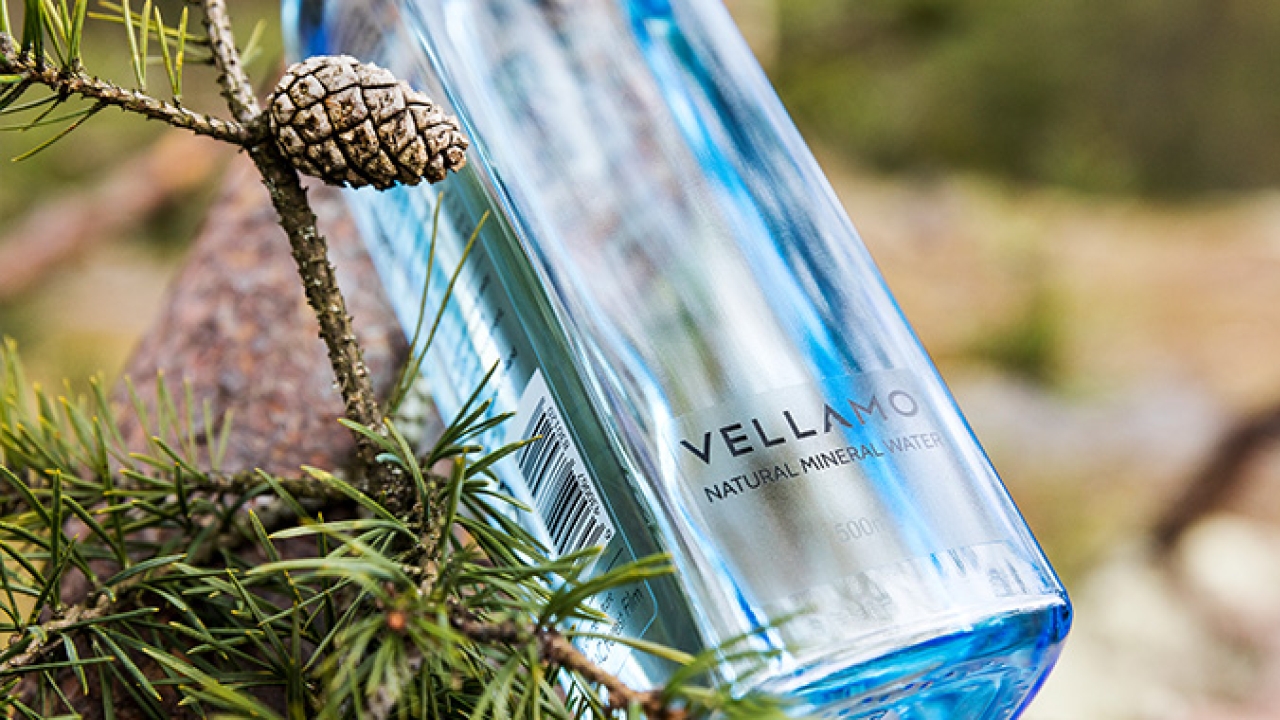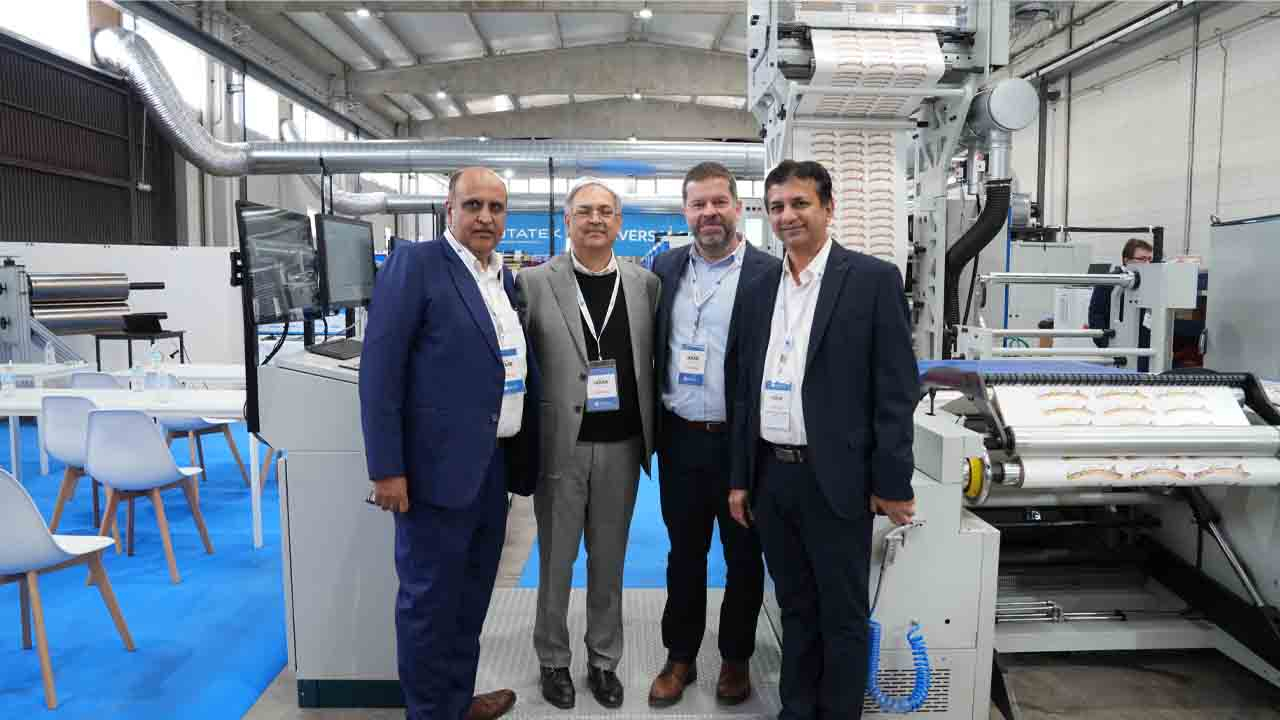Environment as a stakeholder

A Finnish company, Ice Age Water, seems to be doing just that, by selling its unique natural mineral water from the last Ice Age under Vellamo brand (pronounced ‘vel-emo’, its name originates from the goddess spirit of water in Finnish mythology). The brand is all about nature and sustainability, from origin to design and packaging.
Building the brand
‘Vellamo is one of Mother Nature’s perfect creations,’ says Petteri Ahonen, CEO of Ice Age Water. ‘We have taken great measures to ensure its unique taste, purity, and sustainability for the health of our customers and planet by achieving a neutral carbon footprint across production, packaging and logistics.’
‘At the beginning of the design process, I laid out a substantial amount of information in front of myself and the co-designer, Aki Vänni,’ says Markus Heinonen, Vellamo’s marketing manager. ‘The first thing was to find key points important for the brand. One of them, and also a differential factor, was the minerality. Vellamo water draws its minerals from deep under the Finnish ground, where it makes its journey through a 30km long underground canyon. The objective was to translate that journey and the canyon into the Vellamo bottle design. Therefore we decided to shape it as block of ice, choosing a blue translucent reflecting hue visible on glaciers as a statement of its purity. When the bottle is placed face down on its side, you can find the canyon. On top of that, with a little bit of imagination, you can find a goddess-like figure in the flowing water.
‘The whole design is meant to honor this rare water originating from the last Ice Age, which was another key point of the design and an important factor for the brand development. We knew that we have something unique in our hands and we tried to treat the brand the way it deserved to be treated, with respect. After the bottle design was finalized, we passed it on to our 3D artist, Sami Fiander, who brought our ideas to life. The brand development journey has been a long but very rewarding process.’
Since the launch in 2017, Vellamo has received international recognition for its taste and design, including the German Design Award 2020, Red Dot Design Award 2019, Fine Waters Design Award 2019 Gold, and 2019 InnoBev Taste Award. Moreover, a Global Water Study by Unesco and World Water Council has ranked Finland’s ground water as Cleanest and Purest Drinking Water.
Finding sustainable partners
Like the water from 10,000 years ago, completely pure and unique in taste with perfectly balanced minerals and containing no environmental pollution, the label needed to fit with the brand story. So the Vellamo team moved on to researching and selecting products available on the market from companies for which sustainability is equally important.
‘Vellamo only partners with companies that have industryleading sustainability programs, which we also openly share with our customers,’ adds Petteri Ahonen. ‘We actively seek new technologies that can further improve our carbon footprint. We found that the Forest Film developed by UPM Raflatac was one-of-a-kind and represented the perfect match to our core values.’
‘We are labeling a smarter future beyond fossils,’ comments Daryl Northcott, director of the film business at UPM Raflatac Americas. ‘In practice, this means we aim to replace non-renewable materials with renewable and recyclable alternatives. Forest Film is this “beyond fossils” message brought to life. As the world’s first polypropylene film label material derived entirely from wood-based sources based on mass balance approach, Forest Film answers customers’ and brand owners’ needs for using renewable instead of fossil-based raw materials.’
Forest Film was developed in close collaboration with UPM Raflatac’s sister company, UPM Biofuels. ‘After a number of discussions with them, we saw the opportunity to create a product that the pressure-sensitive labeling industry has never before seen,’ says Northcott.
UPM Biofuels converts pulp production residue from sustainably managed forests into renewable naphtha, a drop-in raw material for the chemical industry. This product, called UPM BioVerno, is then sent to a resin supplier and a film supplier to convert it into the filmic face material. Then the company coats it and pairs with the liner material to create Forest Film.
Forest Film is an International Sustainability and Carbon Certification (ISCC) Plus-certified product. ISCC Plus certified plastic film is produced by using sustainable resources to replace an equivalent amount of fossil resources in the production process (known as a mass balance approach).
‘The performance of Forest Film and traditional plastic films is identical. As a drop-in alternative to fossil-based polypropylene film label materials, Forest Film offers companies an efficient and impactful way to reach beyond their sustainability goals without compromising on quality, design or product performance. It is available in both clear and white films, it is suited for a variety of end-uses, including home and personal care, food, and, of course, beverage as you see with our collaboration with Vellamo,’ says Northcott.
Interactive reassurance
Vellamo is an ambitious brand, with a goal to be the world’s most sustainable bottled water company by reducing the CO2 generated within the lifecycle of the product and processes to zero. All manufacturing and sub-supply chain is integrated into the full sustainability process, including bottling operations, which uses only renewable energy including solar and geothermal technology.
‘By the second quarter of 2020, Vellamo will be one of the only water companies announcing their real-time carbon footprint live via its website. Our new production facility is powered by geothermal and solar energy to reach carbon neutrality and we only partner with companies that have industry leading sustainability programs,’ says Petteri Ahonen commenting on the company’s extensive sustainability program.
As a part of its sustainability transparency the brand has decided to add RafMore technology, also developed by UPM Raflatac, to its packaging. ‘RafMore is UPM Raflatac’s innovative, smart label solution that gives individual product unique digital identities and connects them to the web,’ comments Daryl Northcott. ‘Users scan the packaging in the retail or home setting with a mobile device, and the smart label links them with engaging and relevant information.’
In the case of Vellamo, users scan the label – unique to every bottle – and access real-time product lifecycle and carbon footprint data. This allows them to learn the sustainability story of the label material on the water bottle in their hands.
Sustainability and profitability
‘As consumers have demanded from brands more corporate responsibility for the environment, brands have answered those demands with policies and designs that reduce waste, plastic and their carbon footprint,’ comments Vicki Strull. ‘Whereas today’s level of social consciousness for the environment may be new for many established brands, smaller brands and start-ups don’t carry that legacy. Instead, many are founded on the concept of “doing well by doing good”.
‘That’s very compelling evidence for a new brand to start with the environment as a stakeholder. This data also satisfies investors and sales growth objectives. In other words, being environmentally responsible is also profitable – the two are not mutually exclusive.’
According to Vicki Strull, instead of retrofitting a manufacturing process that has already damaged the environment, new companies can make intentional choices with their carbon footprint in mind. While large, established brands are leading the way for mitigation and change, smaller brands, which are not encumbered by that legacy, are entering the market with a social conscience as part of their platform and stealing market share along the way.
‘Any new company entering the market is certainly aware of the research and response we have for brands that have sustainability as an integral part of their core culture. And because today’s consumers can sniff out inauthenticity, and are quick to share it on social media, I believe it is difficult for start-up brands to fake their commitment to Planet Earth,’ concludes Vicki Stull.
Indeed, the sustainable road might be a difficult one for many new brands and companies rethinking their approach to the environment. But smaller brands entering the market, such as Vellamo, have the benefit of building a new product where environmental responsibility can be woven into its concept, its manufacturing process, its marketing, its design. More importantly, it becomes an organic part of the corporate culture.
Stay up to date
Subscribe to the free Label News newsletter and receive the latest content every week. We'll never share your email address.

